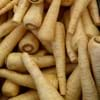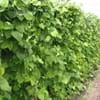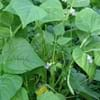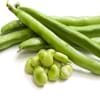Life Span
Biennial and Perennial
Perennial
Origin
Europe, Western Asia
World, Pandemic, North America, Europe, Africa, Asia
Types
Not Available
Alizes
Bumblebee Deelite
Maui Moonlight
Langport Wren
Sarah Taylor
Titan's Glory
Thornbird
Jane Phillips
Orinoco Flow
Number of Varieties
Not Available
Habitat
waste ground, wastelands
gardens, Hillside, Riverbanks, Warmer regions, Wet forest
USDA Hardiness Zone
4-9
Not Available
AHS Heat Zone
7-1
Not Available
Sunset Zone
A1, A2, A3, H1, H2, 1a, 1b, 2a, 2b, 3a, 3b, 4, 5, 6, 7, 8, 9, 10, 11, 12, 13, 14, 15, 16, 17, 18, 19, 20, 21, 22, 23, 24
Not Available
Habit
Rosette/Stemless
Clump-Forming
Minimum Height
Not Available
Minimum Width
Not Available
Flower Color
Yellow
White, Yellow, Blue, Purple, Orange, Pink, Rose, Coral, Peach, Burgundy, Lavender, Plum, Orange Red, Dark Salmon, Bronze, Chocolate, Black
Flower Color Modifier
Bicolor
Bicolor
Fruit Color
Brown, Black
Not Available
Leaf Color in Spring
Green
Not Available
Leaf Color in Summer
Green
Not Available
Leaf Color in Fall
Green
Not Available
Leaf Color in Winter
Not Available
Light Green
Leaf Shape
Pinnate
Long Linear
Plant Season
Summer
Not Available
Sunlight
Full Sun
Full Sun, Partial Sun
Growth Rate
Medium
Medium
Type of Soil
Loam
Clay, Loam, Sand
The pH of Soil
Neutral
Acidic, Neutral, Alkaline
Soil Drainage
Well drained
Well drained
Bloom Time
Summer
Not Available
Tolerances
Drought
Drought
Where to Plant?
Ground, Pot
Ground, Pot
How to Plant?
Seedlings
From Rhizomes, Stem Planting
Plant Maintenance
Medium
Medium
Watering Requirements
Average Water Needs, Do Not over Water, Keep the ground moist but not water-logged
Does not require lot of watering, Keep ground moist, Water when soil is dry
In Summer
Lots of watering
Lots of watering
In Spring
Moderate
Moderate
In Winter
Average Water
Average Water
Soil pH
Neutral
Acidic, Neutral, Alkaline
Soil Type
Loam
Clay, Loam, Sand
Soil Drainage Capacity
Well drained
Well drained
Sun Exposure
Full Sun
Full Sun, Partial Sun
Pruning
Remove damaged leaves, Remove dead branches, Remove dead leaves
Remove dead leaves, Remove dead or diseased plant parts, Requires very little pruning
Fertilizers
All-Purpose Liquid Fertilizer
All-Purpose Liquid Fertilizer
Pests and Diseases
Aphids, Armyworm, Cutworms, Downy mildew, Pitch canker, Red blotch
Bacterial Diseases, Fungal Diseases, Viruses
Plant Tolerance
Drought
Drought
Flower Petal Number
Not Available
Single
Fragrant Bark/Stem
Yes
No
Foliage Texture
Fine
Medium
Foliage Sheen
Matte
Matte
Attracts
Butterflies
Bees, Butterflies
Allergy
Stomach burn
Asthma
Aesthetic Uses
Not Available
Beautification, Showy Purposes
Beauty Benefits
Blood purifying, Good for skin
Not Available
Environmental Uses
Air purification
Air purification
Medicinal Uses
Aphrodisiac
Not Available
Part of Plant Used
Root
Flowers, Leaves, Rhizomes, Root
Other Uses
Food for animals, Used as a nutritious food item
Making Perfumes, Oil is used for aromatherapy, Used as a sedative, Used as essential oil
Used As Indoor Plant
Yes
No
Used As Outdoor Plant
Yes
Yes
Garden Design
Edible, Herb, Vegetable
Bedding Plant, Cutflower, Mixed Border, Rock Garden, Wall
Botanical Name
PASTINACA sativa
IRIS
In Greek
Είδος δαυκίου
Ίρις
In Portuguese
cherivia
Íris
Phylum
Magnoliophyta
Tracheophyta
Class
Magnoliopsida
Liliopsida
Order
Apiales
Asparagales
Family
Apiaceae
Iridaceae
Clade
Angiosperms, Asterids, Eudicots
Angiosperms, Monocots
Tribe
Not Available
Irideae
Subfamily
Not Available
Iridoideae
Number of Species
Not Available
Season and Care of Parsnip and Iris
Season and care of Parsnip and Iris is important to know. While considering everything about Parsnip and Iris Care, growing season is an essential factor. Parsnip season is Summer and Iris season is Summer. The type of soil for Parsnip is Loam and for Iris is Clay, Loam, Sand while the PH of soil for Parsnip is Neutral and for Iris is Acidic, Neutral, Alkaline.
Parsnip and Iris Physical Information
Parsnip and Iris physical information is very important for comparison. Parsnip height is 15.20 cm and width 7.60 cm whereas Iris height is Not Available and width Not Available. The color specification of Parsnip and Iris are as follows:
Parsnip flower color: Yellow
Parsnip leaf color: Green
Iris flower color: White, Yellow, Blue, Purple, Orange, Pink, Rose, Coral, Peach, Burgundy, Lavender, Plum, Orange Red, Dark Salmon, Bronze, Chocolate and Black
- Iris leaf color: Not Available
Care of Parsnip and Iris
Care of Parsnip and Iris include pruning, fertilizers, watering etc. Parsnip pruning is done Remove damaged leaves, Remove dead branches and Remove dead leaves and Iris pruning is done Remove dead leaves, Remove dead or diseased plant parts and Requires very little pruning. In summer Parsnip needs Lots of watering and in winter, it needs Average Water. Whereas, in summer Iris needs Lots of watering and in winter, it needs Average Water.





